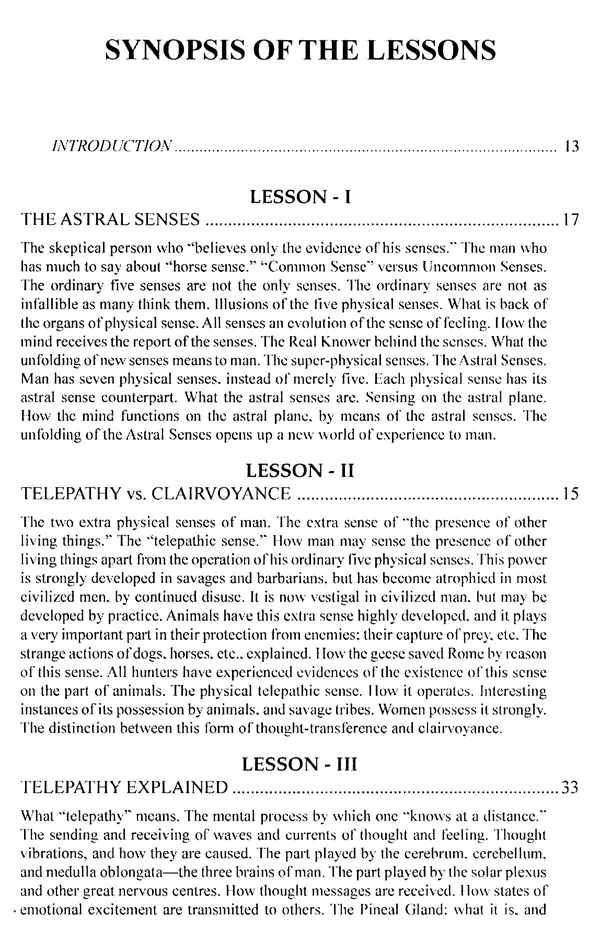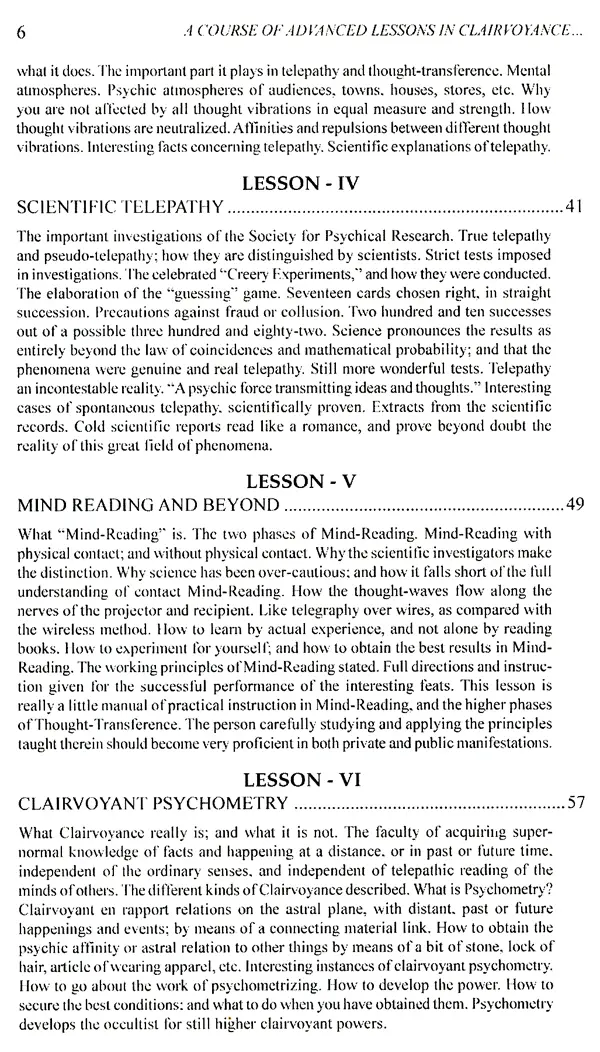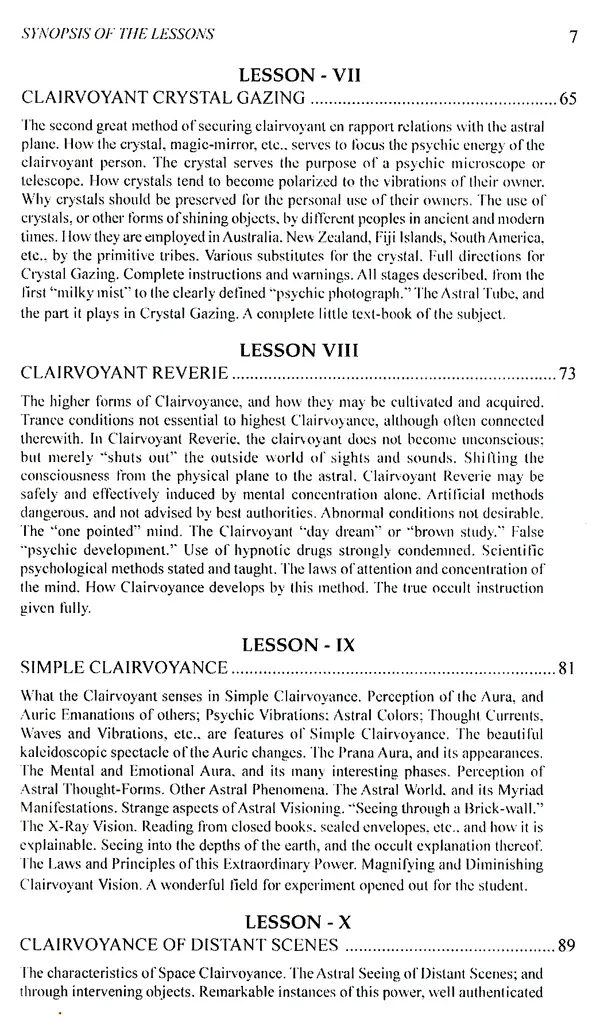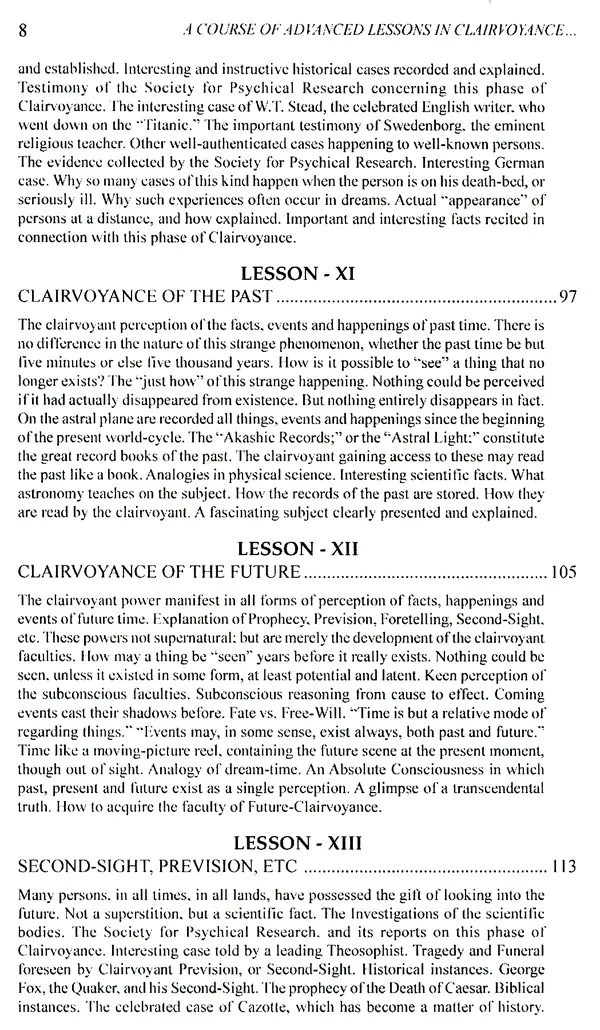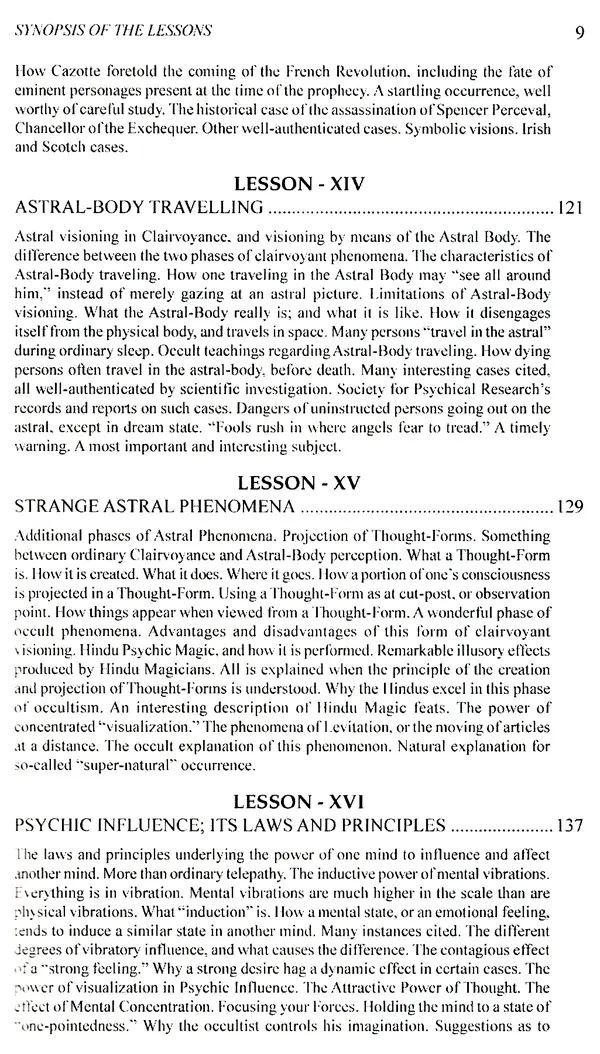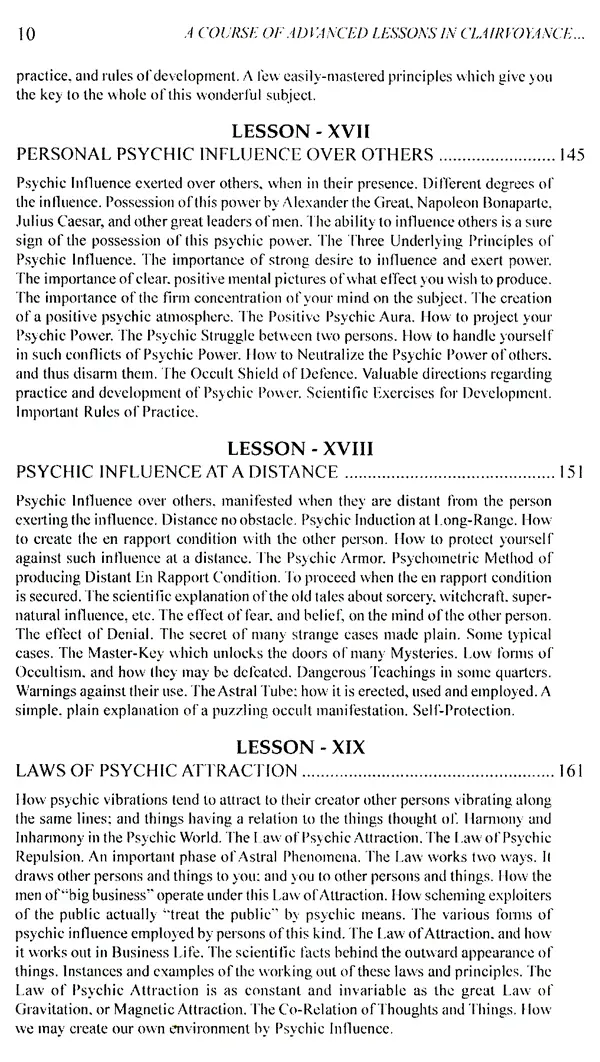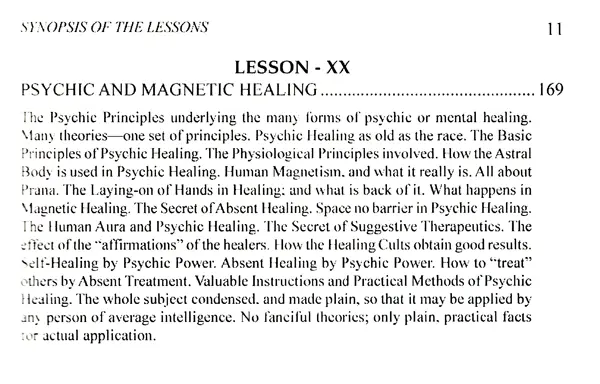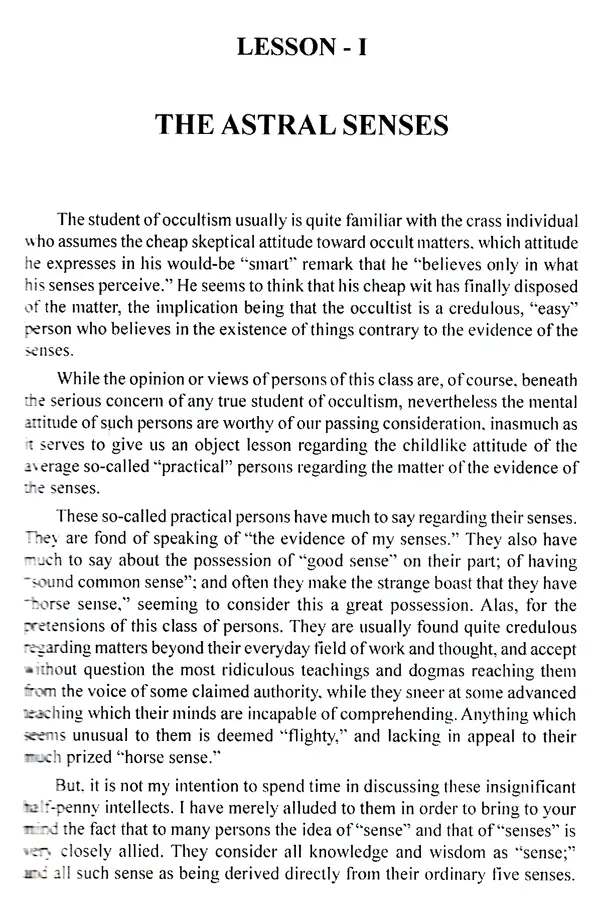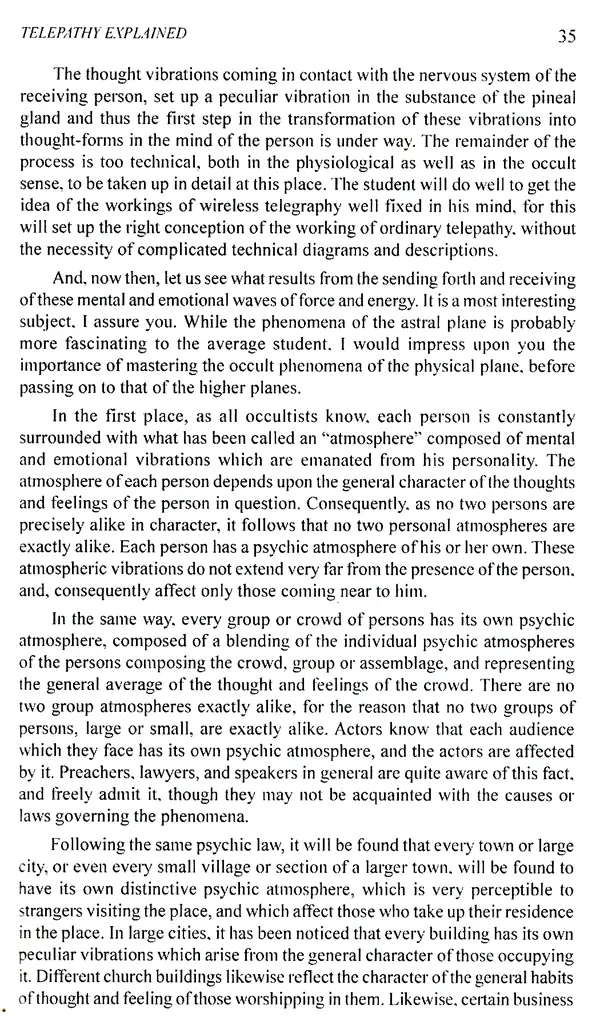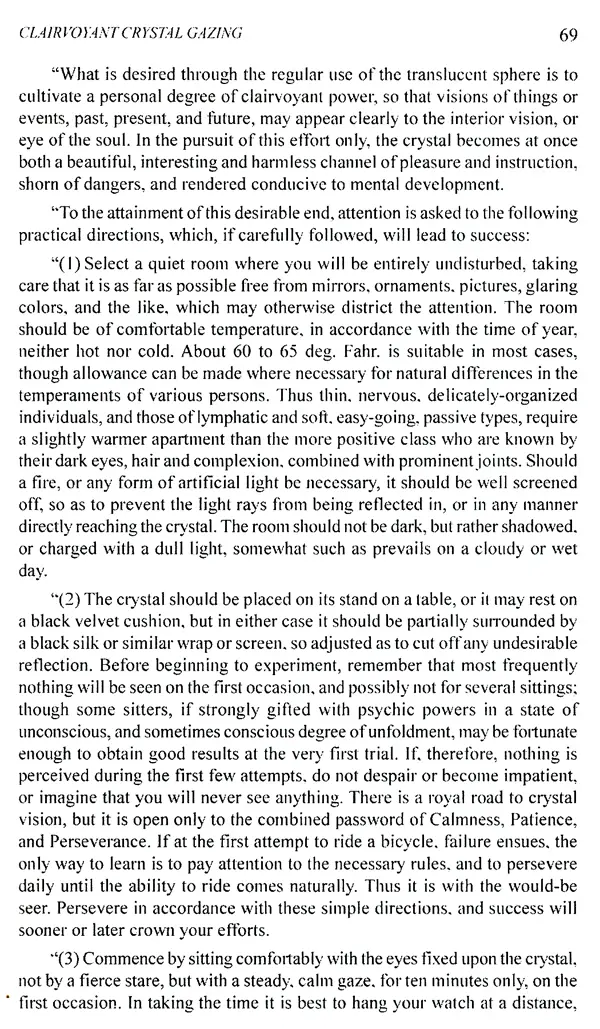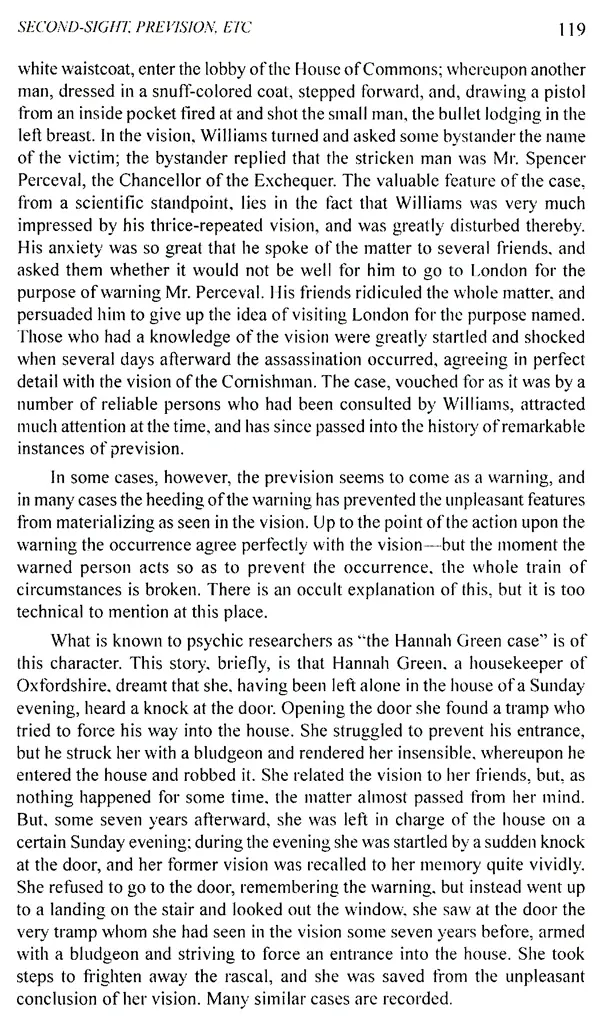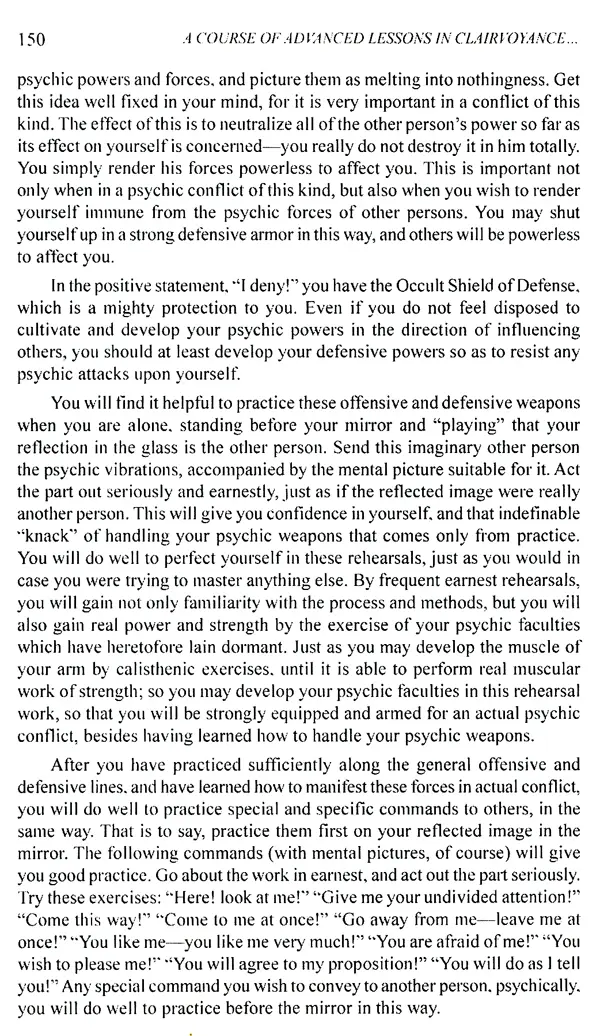
A Course of Advanced Lessons in Clairvoyance and Occult Powers
Book Specification
| Item Code: | UAM757 |
| Author: | Swami Panchadasi (William Walker Atkinson) |
| Publisher: | Kalpaz Publications |
| Language: | English |
| Edition: | 2017 |
| ISBN: | 9789351285113 |
| Pages: | 176 |
| Cover: | HARDCOVER |
| Other Details | 8.90 X 5.90 inch |
| Weight | 330 gm |
Book Description
The student in India expects the teacher to state positively the principals involved, and the methods whereby these principles may be manifested. together with frequent illustrations (generally in the nature of fables parables), serving to link the new knowledge to some already known thing The Hindu student never expects or demands anything in the nature of "proof" of the teachers statements of principle or method; in fact, he would regard it as an insult to the teacher to ask for the same. Consequently, he does not look for ask, specific instances or illustrations in the nature of scientific evidence or proof of the principles taught. He may ask for more information, but solely for the purpose of bringing out some point which he has not grasped; but he avoids as a pestilence any question seeming to indicate argument, doubt of what is being taught him, or of the nature of a demand for proof or evidence.
The Western student, on the other hand, is accustomed to maintaining the skeptical attitude of mind-the scientific attitude of doubt and demand for proof and the teacher so understands it. Both are accustomed to illustrations bringing out the principals involved, but these illustrations must not be fanciful or figurative-they must be actual cases, well authenticated and vouched for as evidence. In short, the Western teacher is expected to actually "prove" to his students his principles and methods, before he may expect them to be accepted. This, of course not from any real doubt or suspicion of the veracity or ability of the teacher, but merely because the Western mind expects to question, and be questioned, in this way in the process of teaching and learning. Consequently, in this series of lessons, I have sought to follow the Western method rather than the Hindu. So far as is possible, I have avoided the flat positive statement of principles and methods, and have sought to prove each step of the teaching. Of course, I have been compelled to assume the existence of certain fundamental principles. in order to avoid long and technical metaphysical and philosophical discussions.
**Contents and Sample Pages**

